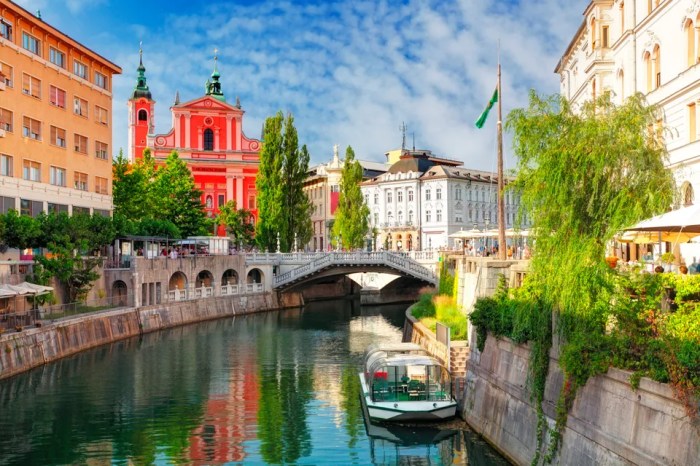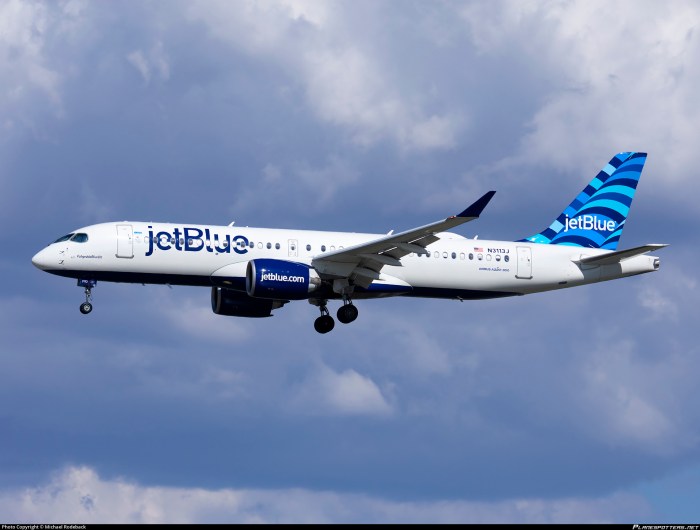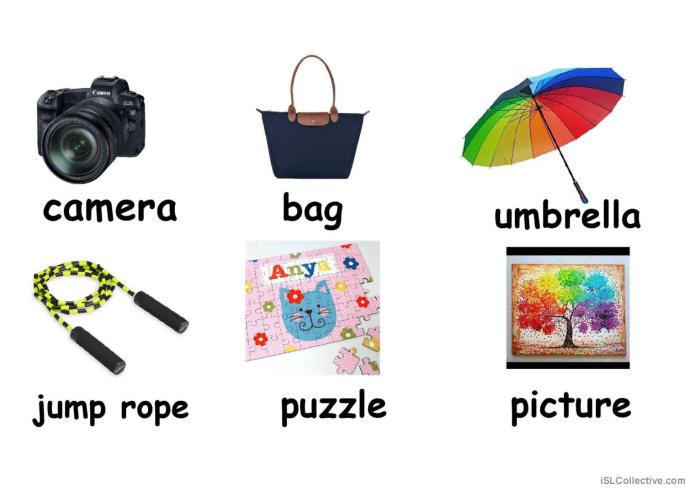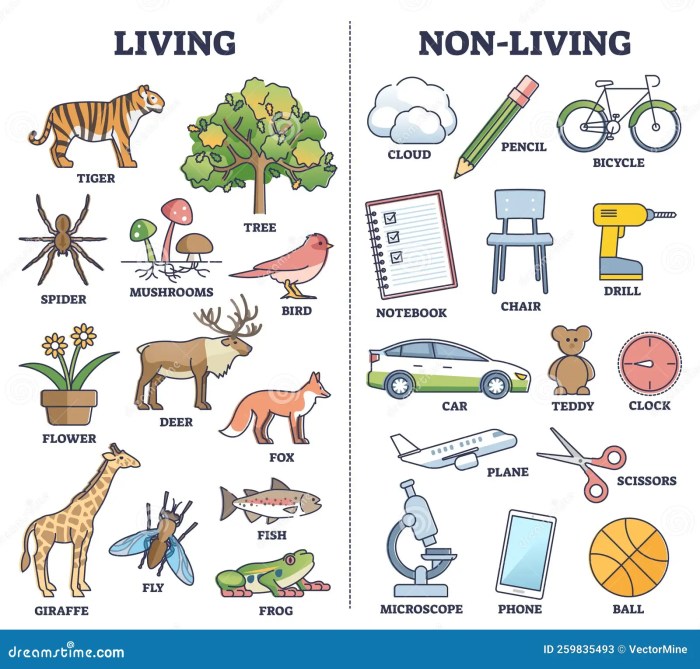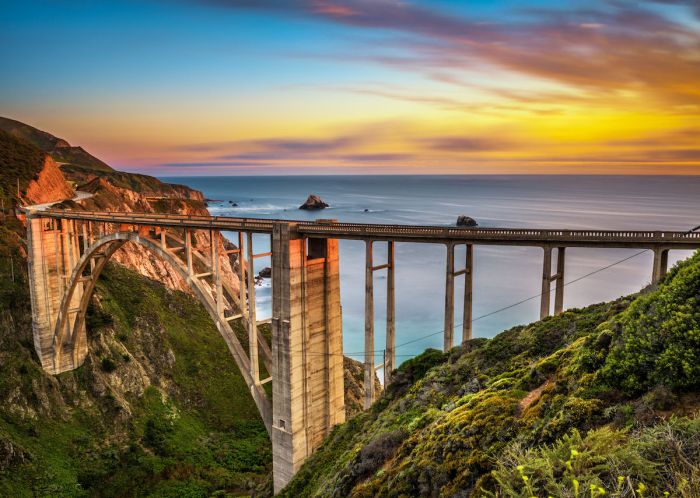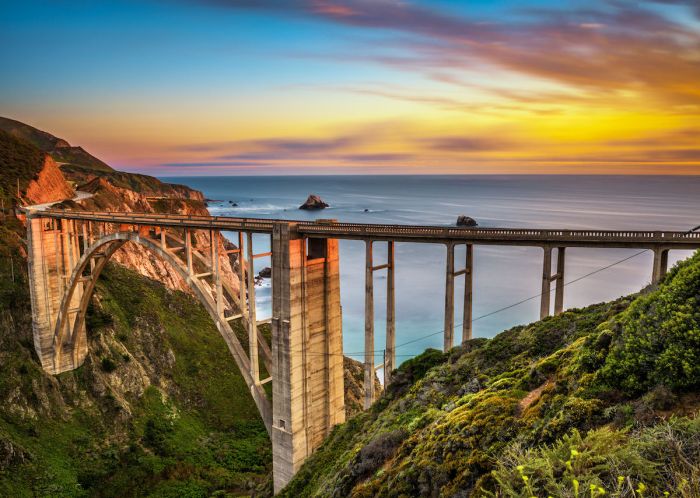Slovenia on a budget is a fantastic way to explore this beautiful country without breaking the bank. From charming villages to stunning national parks, Slovenia offers incredible experiences for every type of traveler. This article dives deep into making the most of your Slovenian adventure while keeping costs low, revealing hidden gems and affordable options for accommodation, transportation, food, and activities.
This comprehensive guide explores how to plan your trip efficiently and enjoy a memorable experience without overspending. We’ll delve into budget-friendly accommodation options, cost-effective transportation methods, and strategies for savoring local cuisine on a limited budget.
Introduction to Slovenia on a Budget
Slovenia, nestled in the heart of Europe, offers a captivating blend of stunning natural beauty, rich history, and vibrant culture. Despite its appeal to a wide range of travelers, Slovenia presents unique opportunities for budget-conscious explorers. From charming villages nestled in the Julian Alps to the Adriatic coast, budget-friendly options abound, making it an accessible destination for those seeking an authentic European experience without breaking the bank.Slovenia’s tourism industry has evolved significantly, recognizing the growing demand for affordable travel.
Early tourism focused on high-end hotels and catered primarily to wealthy visitors. However, over time, the industry adapted, introducing hostels, guesthouses, and camping sites, catering to a broader range of travelers and creating a more inclusive tourism experience. This evolution reflects a global trend towards more accessible and affordable travel, where budget-friendly options are crucial to broadening the tourism base.
Slovenia’s Appeal to Budget Travelers
Slovenia’s appeal for budget travelers stems from its diverse offerings and relative affordability compared to other Western European destinations. Its well-developed public transportation system, a network of bike paths, and abundance of outdoor activities make exploring the country a rewarding and cost-effective experience. This accessibility caters to those seeking to immerse themselves in the country’s natural wonders without substantial financial burdens.
Many travelers are drawn to the opportunity to experience authentic Slovenian culture, savor local cuisine, and participate in activities that offer a unique and immersive experience, without the price tag of high-end hotels and restaurants. The country’s reputation for friendly locals and welcoming atmosphere further contributes to its attractiveness for budget-conscious tourists.
Types of Budget Travelers Drawn to Slovenia
Several types of travelers are drawn to Slovenia on a budget. Backpackers seeking to explore Europe on a limited budget often find Slovenia a perfect fit, with its numerous budget-friendly accommodations and activities. Families seeking a cost-effective holiday can find numerous affordable options for lodging and activities, such as national parks and hiking trails. Groups of friends looking for a fun and affordable adventure find a great mix of hostels, campsites, and affordable guesthouses.
These travelers often prioritize experiencing the local culture, participating in outdoor activities, and creating lasting memories, all while sticking to a budget. Solo travelers also find Slovenia a welcoming destination, with many affordable options for both accommodation and activities.
Exploring Slovenia on a shoestring budget is totally doable! Think charming villages, stunning hikes, and delicious local food without breaking the bank. While dreaming of tropical escapes like Fiji or Rarotonga in the Cook Islands, it’s cool to compare and contrast those destinations, like in this insightful comparison of Fiji vs Rarotonga the Cook Islands , you can still find amazing value in Slovenia.
It’s all about smart planning and embracing the local culture, which is key for a truly memorable trip on a budget.
Budget-Friendly Accommodation Options
Finding affordable accommodation in Slovenia is straightforward. The country offers a diverse range of budget-friendly options to suit various preferences and needs.
| Accommodation Type | Description | Example Price Range (per night) |
|---|---|---|
| Hostels | Often located in popular tourist areas, hostels provide dormitories and private rooms. | €15-€35 |
| Guesthouses | Family-run or privately owned guesthouses offer comfortable rooms and often include breakfast. | €25-€60 |
| Camping | Slovenia has numerous campsites, offering a more immersive and budget-friendly experience. | €15-€30 |
| Airbnb | Private rooms or apartments, often in smaller towns and villages. | €20-€50 |
The table above highlights the variety of budget-friendly accommodation options available in Slovenia, allowing travelers to choose the one that best suits their needs and preferences.
Budget-Friendly Accommodation
Slovenia offers a plethora of budget-friendly accommodation options, catering to diverse traveler preferences and budgets. From cozy hostels to charming guesthouses and affordable Airbnb rentals, finding a place to stay without breaking the bank is easily achievable. This section will delve into the various options, their pros and cons, pricing ranges, and amenities.Budget travelers can maximize their experience by carefully selecting the most suitable accommodation type, aligning with their travel style and priorities.
A comprehensive understanding of the different options will empower them to make informed decisions and secure the best possible value for their money.
Hostel Accommodation
Hostels are a popular choice for budget travelers seeking social interaction and a vibrant atmosphere. They typically offer dormitory-style rooms with shared facilities, making them an economical option.
- Pros: Hostels often provide a great opportunity to meet fellow travelers, fostering friendships and shared experiences. They usually have social areas, which encourage interaction and create a sense of community. The shared bathrooms and kitchens are often more environmentally friendly than private facilities, making it a responsible choice for eco-conscious travelers.
- Cons: Dorm rooms may not offer the same level of privacy as private rooms, and noise levels can be higher in communal areas. The cleanliness and maintenance of shared spaces can vary, so it’s crucial to check reviews and choose reputable hostels.
- Pricing Range: Dorm beds in Slovenian hostels generally range from €15 to €35 per night, depending on the season, location, and amenities.
- Amenities: Amenities typically include shared kitchens, bathrooms, common areas, and sometimes even laundry facilities. Some hostels may also offer free Wi-Fi, luggage storage, and tours.
Guesthouse Accommodation
Guesthouses represent a more personal and intimate alternative to hostels. They usually offer private rooms, while often maintaining a communal atmosphere.
- Pros: Guesthouses provide a more private and comfortable environment compared to hostels, while still offering a social aspect. They often feature friendly hosts who can offer local recommendations and insights.
- Cons: Guesthouses might be less social than hostels. The cost may be slightly higher than hostels, depending on the quality and amenities.
- Pricing Range: Guesthouse rooms in Slovenia typically range from €30 to €80 per night, again depending on the location, season, and amenities.
- Amenities: Guesthouses often offer private bathrooms, sometimes breakfast, and access to common areas, depending on the specific establishment.
Airbnb Accommodation
Airbnb offers a wide array of apartments, rooms, and houses, providing a greater sense of independence and privacy compared to other options.
- Pros: Airbnb stays often come with full kitchens, allowing for self-catering, which can significantly reduce dining costs. Many rentals feature comfortable living spaces, making them ideal for families or groups.
- Cons: The cleanliness and condition of Airbnb rentals can vary significantly, so thorough reviews are crucial. You may lack the direct interaction with local hosts that guesthouses provide.
- Pricing Range: Airbnb rentals in Slovenia vary significantly depending on the location, size, and amenities. Expect to find options ranging from €40 to €150 or more per night.
- Amenities: Amenities vary greatly. Some listings offer basic rooms with shared facilities, while others provide fully equipped kitchens, living areas, and private bathrooms.
Accommodation Comparison Table
| Accommodation Type | Pros | Cons | Pricing Range (approx.) | Amenities |
|---|---|---|---|---|
| Hostel | Social, affordable, often eco-friendly | Less privacy, variable cleanliness | €15-€35/night | Shared kitchens, bathrooms, common areas |
| Guesthouse | Private rooms, friendly hosts, often communal | Potentially higher cost than hostels | €30-€80/night | Private bathrooms, sometimes breakfast |
| Airbnb | Independence, self-catering, comfortable spaces | Variable cleanliness, less direct host interaction | €40-€150+/night | Varies greatly; kitchens, living areas, private bathrooms |
Transportation on a Budget
Exploring Slovenia on a budget doesn’t mean sacrificing travel experiences. Efficient and affordable transportation is key to maximizing your time and minimizing costs. From scenic train journeys to cost-effective bus rides and even cycling adventures, Slovenia offers various ways to get around without breaking the bank. This section will detail the different options available and how to plan your routes effectively.
Budget-Friendly Bus Travel
Slovenia boasts a well-developed network of buses, offering convenient connections between towns and cities. These services are generally economical and provide a good alternative to trains, especially for longer distances. Buses are a reliable way to get around, offering flexibility in scheduling and routes.
- Major bus companies like Flixbus and others operate routes throughout Slovenia, connecting major cities and tourist destinations.
- Tickets can often be purchased in advance online for potentially discounted fares.
- Consider purchasing a multi-day pass if you plan on extensive bus travel, as this can often be more cost-effective than purchasing individual tickets.
- Fares typically range from €5 to €20, depending on the distance and time of year.
Train Travel Options
Slovenia’s train network provides scenic routes, especially for travel between cities and smaller towns. Train travel offers a unique experience, allowing you to take in the countryside views.
- Slovenia’s national railway company, Slovenian Railways (Železnice Slovenije), offers a range of train classes, each with varying prices. First-class tickets are more expensive, but provide more comfort and amenities.
- Discounts are often available for families, groups, and those travelling on specific days.
- For shorter distances, buses can be more affordable than trains. However, trains often offer a more enjoyable and comfortable travel experience, especially for longer journeys.
- Fares for train travel typically range from €10 to €30, depending on the distance and class of ticket.
Cycling as a Sustainable Transportation Method
Slovenia’s picturesque landscapes are ideal for exploring by bike. Cycling offers an eco-friendly and active way to experience the beauty of the countryside.
- Slovenia’s extensive network of cycle paths allows for scenic and enjoyable journeys.
- Bike rentals are readily available in many towns and tourist areas, at prices ranging from €10 to €20 per day. Some accommodations also offer bike rentals.
- Packing your own bike can be more cost-effective if you are travelling for longer periods and have the appropriate gear.
- Cycling is particularly suitable for exploring areas such as the Julian Alps or the Soča Valley.
Planning Your Transportation Routes, Slovenia on a budget
Strategic planning is crucial for budget-conscious travel. Utilizing online resources for travel planning can help you find the best deals and routes.
- Use online travel planning tools to compare prices and routes between different transportation methods.
- Consider purchasing a multi-day pass if you plan on using a specific mode of transport extensively.
- Checking schedules and booking tickets in advance can help avoid unexpected costs.
- Combine different transportation methods to make your journeys more cost-effective.
Cost Comparison Table
| Transportation Method | Approximate Cost (per person) | Accessibility |
|---|---|---|
| Bus | €5-€20 | High, connecting major cities and towns |
| Train | €10-€30 | Good, connecting major cities and towns; limited access to some smaller areas |
| Cycling | €10-€20 (rental) or Free (own bike) | High, ideal for exploring rural areas; limited for longer distances |
Food and Drink on a Budget
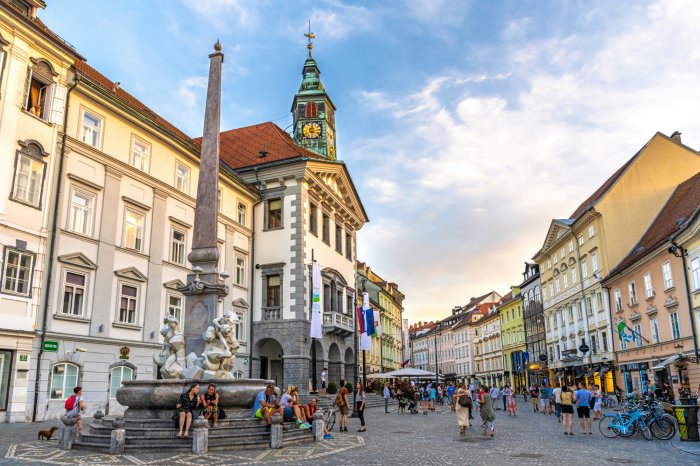
Slovenia offers a delightful culinary experience without breaking the bank. From fresh produce at local markets to affordable restaurants serving traditional dishes, savouring the local flavours is easily achievable on a budget. Understanding the nuances of pricing and exploring alternative options will ensure a satisfying and cost-effective gastronomic journey.
Budget-Friendly Food Options
Slovenia’s vibrant food scene offers a wide array of affordable options. Exploring local markets, supermarkets, and embracing picnics are excellent ways to keep your food costs down. These methods provide a great opportunity to experience authentic Slovenian cuisine at a fraction of the cost of tourist-oriented establishments.
Local Markets and Supermarkets
Local markets are treasure troves of fresh, seasonal produce and local delicacies. Supermarkets provide a convenient alternative, offering a good selection of affordable staples. These locations allow you to stock up on ingredients for picnics or simple meals in your accommodation. They also allow you to interact with local vendors, discover regional specialties, and understand local food traditions.
- Local markets often feature stalls selling fresh fruits, vegetables, cheeses, meats, and baked goods. These products are usually priced lower than those in tourist areas.
- Supermarkets like Mercator and Lidl offer a wide selection of affordable products, including bread, milk, cheese, and other staples.
- Consider purchasing some ingredients at a market for a picnic or a meal in your accommodation to save money.
Affordable Restaurants
Finding affordable restaurants in Slovenia is easy, especially if you’re willing to venture beyond the main tourist areas. Look for “gostilne,” which are traditional Slovenian restaurants, often serving hearty, home-style meals at reasonable prices. Alternatively, try smaller, family-run establishments. These often offer authentic cuisine without the tourist markups.
- Search for restaurants that offer set menus or daily specials.
- Consider eating at lunchtime, when prices are often lower than during dinner.
- Look for restaurants with positive reviews from locals on sites like TripAdvisor, rather than those solely focusing on tourist ratings.
Sampling Local Cuisine
Exploring local cuisine doesn’t have to be expensive. Many traditional Slovenian dishes use affordable ingredients and simple cooking methods. Enjoy the local delicacies without the tourist price tags.
- Traditional dishes like jota (a type of potato pancake) and various types of sausages are often inexpensive and delicious.
- Try local cheeses and cured meats at markets or in smaller shops, a taste of Slovenia at a lower cost.
- Prepare your own meals using affordable ingredients to sample traditional Slovenian dishes.
Comparing Local and Tourist Food Prices
Tourist-oriented restaurants typically mark up prices significantly, charging a premium for convenience and tourist-focused options. Local restaurants, on the other hand, offer the same flavours at a much more reasonable cost. This difference in pricing is a direct result of the target market and the overhead involved.
Affordable Food and Drink Options
| Food/Drink | Local Price (Approximate) | Tourist Price (Approximate) |
|---|---|---|
| Jota (Potato Pancake) | €3-€5 | €7-€10 |
| Local Cheese and Meats (per 100g) | €3-€6 | €6-€12 |
| Dinner at a traditional “gostilna” | €15-€25 | €25-€40 |
| Lunch at a local cafe | €8-€15 | €15-€25 |
| Drinks (Beer, Wine) | €2-€5 | €4-€8 |
Activities and Attractions
Slovenia offers a plethora of natural beauty and cultural experiences, making it a fantastic destination for budget-conscious travelers. Beyond the well-trodden tourist paths, numerous free and low-cost activities await those who seek to immerse themselves in the country’s unique charm without breaking the bank. Exploring these hidden gems allows for a deeper appreciation of Slovenia’s character.
Free and Low-Cost Activities
Many of Slovenia’s most captivating attractions are free or offer low-cost options. This allows you to maximize your time and budget. Hiking trails, national parks, and local festivals are often free or have minimal entrance fees. Taking advantage of these opportunities allows for a memorable and cost-effective experience.
Hiking and Nature Exploration
Slovenia boasts an extensive network of hiking trails, catering to various experience levels. From leisurely strolls through picturesque valleys to challenging climbs through alpine meadows, there’s a trail for everyone. National parks like Triglav National Park offer stunning views and opportunities for wildlife spotting. Pack your own snacks and water to minimize expenses. Consider bringing a picnic basket filled with local treats to enjoy amidst the breathtaking scenery.
Discovering Local Festivals and Events
Slovenia comes alive with vibrant local festivals and events throughout the year. These events often offer a glimpse into the country’s rich culture and traditions. Many festivals feature live music, local crafts, and delicious food, all without substantial costs. Checking local event calendars and tourist information websites can help you discover what’s happening during your visit.
Planning a budget-friendly trip to Slovenia? It’s totally doable! While exploring the stunning landscapes and charming villages, consider the incredible adventure of experiencing the space perspective balloon kennedy space center – a unique opportunity to soar above the world. Afterward, you can still enjoy Slovenia’s budget-friendly delights like hiking and delicious local food, making memories that last a lifetime without breaking the bank.
Utilizing Free and Low-Cost Attractions
To get the most out of your budget-friendly adventures, plan your itinerary around free activities and attractions. Visit national parks on weekdays to avoid crowds and potentially higher entrance fees on weekends. Look for local events and festivals in your travel area. Utilize public transportation or bicycles to explore the region and minimize transportation costs. Check local tourist information centers for free walking tours and other cost-effective activities.
Slovenia’s surprisingly affordable charm makes it a great budget travel destination. While exploring the stunning landscapes and charming towns, you might find yourself daydreaming about a peaceful retirement. If you’re looking for the best places to retire in North Carolina, consider checking out this guide to find some beautiful spots best places to retire in north carolina.
Ultimately, though, Slovenia on a budget offers a fantastic blend of affordability and adventure, without the need for a full retirement plan.
Planning Activities and Tours on a Budget
Creating a detailed itinerary allows for efficient travel and minimizes costs. Consider the time of year for optimal weather and reduced crowds. Combine multiple activities to maximize your time and resources. Utilize public transportation or rent a bike for getting around. Utilize free walking tours to explore towns and cities, and enjoy local restaurants for affordable meals.
Best Time to Visit for Budget-Friendly Deals
Shoulder seasons, such as spring and autumn, often provide the best balance between pleasant weather and lower prices. Avoid peak summer months for better deals on accommodation and activities. Check for seasonal discounts and promotions offered by attractions or accommodation providers. Many restaurants offer discounted menus or specials during the off-season.
Table of Free or Low-Cost Attractions
| Attraction | Cost | Description |
|---|---|---|
| Triglav National Park | Low (entrance fee applies) | Stunning alpine scenery, hiking trails, and wildlife viewing opportunities. |
| Škocjan Caves | Low (entrance fee applies) | Breathtaking underground cave system with unique formations. |
| Lake Bled | Low (entrance fees for some attractions) | Picturesque lake with a church, island, and castle. |
| Local Markets | Free | Discover local produce, crafts, and souvenirs. |
| Hiking Trails in the Julian Alps | Free | Enjoy breathtaking mountain views and fresh air. |
Tips for Saving Money in Slovenia: Slovenia On A Budget
Slovenia offers a captivating blend of natural beauty and rich culture, but exploring it on a budget can be a rewarding experience. By strategically planning your trip and taking advantage of local resources, you can significantly reduce your expenses without sacrificing the enjoyment of your Slovenian adventure. This section provides practical tips to help you make the most of your Slovenian experience while keeping your wallet happy.Budget travel isn’t about sacrificing experiences; it’s about maximizing value.
By understanding the local scene and embracing alternative options, you can uncover hidden gems and truly immerse yourself in Slovenia’s charm without breaking the bank.
Planning Your Trip During the Off-Season
The off-season, typically from late autumn to early spring, presents a fantastic opportunity to save money on accommodation and activities. Hotels and guesthouses often lower their prices during these periods, offering significant savings. Moreover, popular attractions might have fewer crowds, allowing for a more peaceful and less rushed exploration. For example, visiting Ljubljana in late October can yield substantial savings on accommodation compared to peak summer months, while still allowing you to enjoy the city’s vibrant atmosphere.
Utilizing Local Transportation
Slovenia boasts an efficient and affordable public transportation system, including buses and trains. Utilizing these options can significantly reduce your reliance on taxis or rental cars, translating to substantial cost savings. Furthermore, exploring cities like Ljubljana or smaller towns on foot or by bike is a fantastic way to experience the local culture and discover hidden gems at no cost.
Consider purchasing a multi-day travel pass for maximum savings on public transport.
Securing Discounts on Activities and Attractions
Many attractions and activities in Slovenia offer discounts for various groups, including students, families, and senior citizens. Always check for potential discounts or special offers, often advertised on the official websites of the attractions. Additionally, look for combined tickets that bundle multiple attractions, potentially offering more value for your money. For instance, a combined ticket for a museum and a nearby park could provide a more economical option than purchasing tickets for each attraction separately.
Many tourist information centers can provide you with detailed information on discounts and promotions.
Maximizing Accommodation Options
Beyond traditional hotels, consider budget-friendly options like hostels, guesthouses, or apartments. Hostels offer a social environment, while guesthouses often provide a more intimate and local experience. Additionally, renting an apartment or a room can be a cost-effective way to accommodate a group of friends or family. For instance, Airbnb can be an excellent resource for finding affordable and well-located apartments in various Slovenian towns.
Savoring Budget-Friendly Food and Drink
Slovenia’s culinary scene offers a wealth of budget-friendly options. Explore local markets for fresh produce and ingredients. Eating at local restaurants and cafes rather than upscale establishments can dramatically reduce dining costs. Also, try cooking some meals in your accommodation, particularly if you are staying in an apartment or a self-catering facility. Enjoying picnics in nature or parks, utilizing the many free outdoor spaces, is a superb and affordable way to experience Slovenia’s picturesque landscapes.
Illustrative Examples of Budget-Friendly Experiences
Embarking on a budget-friendly adventure in Slovenia doesn’t mean sacrificing unforgettable experiences. With a little planning and a willingness to embrace the local culture, you can create incredible memories without breaking the bank. Slovenia offers a wealth of affordable activities and attractions, catering to every type of traveler.Slovenia’s charm lies in its accessibility. From picturesque villages to stunning national parks, the country offers a diverse range of experiences, all within reach of a budget-conscious traveler.
Embrace the spirit of adventure, discover hidden gems, and savor authentic culinary delights – all without overspending.
A Sample Budget-Friendly Itinerary
This itinerary focuses on experiencing Slovenia’s natural beauty and cultural heritage without excessive spending.This 7-day itinerary focuses on exploring the Julian Alps, Lake Bled, and Ljubljana.
- Day 1-2: Ljubljana Exploration. Arrive in Ljubljana, check into a hostel or budget-friendly guesthouse. Explore the city center, visit the Ljubljana Castle (entry fees are often affordable), and enjoy the picturesque Ljubljanica River. Take advantage of free walking tours and explore the city’s parks. Enjoy a traditional Slovenian dinner at a local “gostilna” (traditional restaurant) for a budget-friendly meal.
- Day 3-4: Lake Bled. Take a bus or train to Lake Bled. Enjoy a leisurely walk around the lake, visit the Bled Castle (entry fees are reasonable). Have a picnic lunch, a key element for keeping costs down, with local produce from a market.
- Day 5-6: Julian Alps. Take a bus or train to the Julian Alps region. Hike in the surrounding hills, visit charming mountain villages (like Bohinj), and soak in the stunning mountain scenery. Camping in designated areas is a great option for significantly cutting costs.
- Day 7: Departure. Enjoy a final Slovenian breakfast and depart from Ljubljana or another suitable location.
A Budget-Friendly Day Trip to Lake Bohinj
Lake Bohinj, nestled in the Julian Alps, offers a stunning day trip experience.
- Morning (8:00 AM): Take a bus from Ljubljana to Bohinj. The cost of public transport is significantly lower than other options.
- Exploration (9:00 AM – 1:00 PM): Explore the picturesque lakefront, enjoy a walk around the lake, and visit the charming village of Bohinj. Look for local markets or shops to find affordable souvenirs.
- Lunch (1:00 PM – 2:00 PM): Enjoy a picnic lunch with snacks and drinks, which is a cost-effective way to eat. Alternatively, find a local “gostilna” for a budget-friendly meal.
- Afternoon (2:00 PM – 6:00 PM): Enjoy a hike to a viewpoint for panoramic views, or take a boat trip on the lake. If you’re interested in a more adventurous activity, consider hiking trails or cycling around the area.
- Return (6:00 PM): Take a bus back to Ljubljana.
A Budget-Friendly Meal Experience
“Gostilne” are an excellent option for a budget-friendly meal.
- Traditional Slovenian Cuisine: Many gostilne offer affordable set menus or daily specials, which can include traditional Slovenian dishes like jota, štruklji, or goulash. These dishes often provide a delicious and authentic taste of Slovenian cuisine.
- Local Markets: Often, markets offer local produce that can be used for a picnic, further reducing the cost of your meal.
A Budget-Friendly Accommodation Stay
Hostels, guesthouses, and apartments are great budget-friendly options.
- Hostels: Offer dorm rooms with shared facilities at a fraction of the cost of hotels. They are ideal for solo travelers and groups.
- Guesthouses: Often feature comfortable rooms and a welcoming atmosphere at more affordable rates than hotels.
- Apartments: Consider renting an apartment for a longer stay, especially if you’re traveling with a group or family. This can save money on daily accommodation costs.
Cost-Effective Trip Experiences Summary
| Activity | Cost Estimate (per person, approximate) | Tips for Saving Money |
|---|---|---|
| Accommodation (hostel) | €20-€30/night | Book in advance, consider off-season travel |
| Food (picnic lunch) | €10-€15 | Buy local produce at markets, pack your own lunch |
| Transportation (bus) | €5-€10/trip | Utilize public transport; consider a multi-day pass |
| Activities (hiking) | Free | Explore free activities like hiking and walking |
| Entrance fees (national park) | €5-€10/person | Check for discounts and free entry days |
Visual Representation of Slovenia on a Budget

Slovenia, often associated with picturesque landscapes and charming villages, offers a wealth of budget-friendly experiences. This isn’t a contradiction; stunning scenery doesn’t require a hefty price tag. Discover how the beauty of Slovenia can be enjoyed without breaking the bank, by focusing on the visual aspects of affordable travel.Discovering Slovenia on a budget means embracing its natural beauty, local culture, and accessible experiences.
The visual narrative of a budget-friendly Slovenian adventure is one of authentic encounters, mindful choices, and the joy of experiencing genuine hospitality.
Slovenian Landscapes: Budget-Friendly Beauty
Slovenia boasts a diverse range of landscapes, from the Julian Alps’ dramatic peaks to the rolling hills of the countryside. Hiking trails wind through valleys, offering panoramic views of the surrounding countryside. Finding a picturesque spot to enjoy a picnic lunch or a leisurely stroll along a mountain stream is easily achievable. The visual appeal of these natural spaces is often enhanced by the absence of crowds, providing a serene and intimate experience.
These landscapes are a testament to Slovenia’s natural beauty and its affordability.
Budget-Friendly Accommodation: A Visual Perspective
Budget-friendly accommodations in Slovenia often take the form of charming guesthouses, family-run hotels, or hostels. The exteriors may be simple, yet the warmth and welcoming atmosphere are undeniable. Think of brightly colored facades, rustic wooden structures, or well-maintained buildings that speak of local craftsmanship. These accommodations are usually located in the heart of villages or close to scenic areas, putting you right in the middle of the action.
Inside, expect cozy rooms with basic but comfortable amenities. The visual is one of simple elegance, reflecting the value-driven nature of the experience.
Budget-Friendly Food Markets: A Sensory Experience
A budget-friendly food market in Slovenia is a vibrant scene of local produce, freshly baked goods, and aromatic spices. The stalls are often overflowing with colourful fruits and vegetables, displaying the bounty of the Slovenian countryside. The visual is a feast for the eyes, with the array of local delicacies. The sights and sounds of the market—the chatter of vendors, the clinking of produce, and the tantalizing aromas—paint a vivid picture of Slovenian culinary traditions.
The market is a true showcase of the region’s local products and affordable food options.
Budget-Friendly Transportation: Visual Simplicity
A budget-friendly transportation option in Slovenia could be a scenic train ride through the countryside, a comfortable bus journey connecting towns, or a bike ride along picturesque routes. The visual appeal of such options ranges from the cozy interiors of a well-maintained bus to the open road leading to a quaint village, or the view from a train window.
The images are about the ease of access, the journey, and the destination, making it a visual representation of how easily you can get around. These methods of transportation are not only affordable but also allow for a greater immersion in the local surroundings.
Budget-Friendly Activities: Visual Engagement
A budget-friendly activity in Slovenia could be visiting a local museum showcasing Slovenian art and culture. The interior of the museum might be simple but the exhibits are likely to be well-organized, showcasing the region’s history and artistic heritage. Visiting a local festival or fair, where traditional music and dance are performed, presents a vibrant scene of cultural expression.
The sights and sounds of such events provide a glimpse into the heart of Slovenian culture, showcasing its passion and warmth. The visual appeal is about engagement with local culture and its authentic expression.
Final Conclusion
In conclusion, experiencing Slovenia on a budget is entirely achievable. With careful planning and a willingness to embrace local experiences, you can create unforgettable memories without emptying your wallet. From affordable accommodations to budget-friendly activities, this guide empowers you to explore Slovenia’s natural beauty and cultural richness without sacrificing your financial goals. Now get ready to plan your incredible Slovenian adventure!
